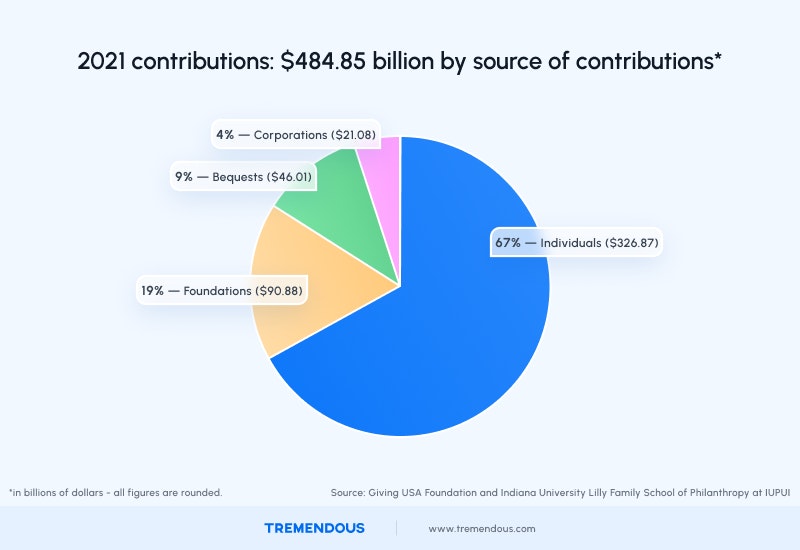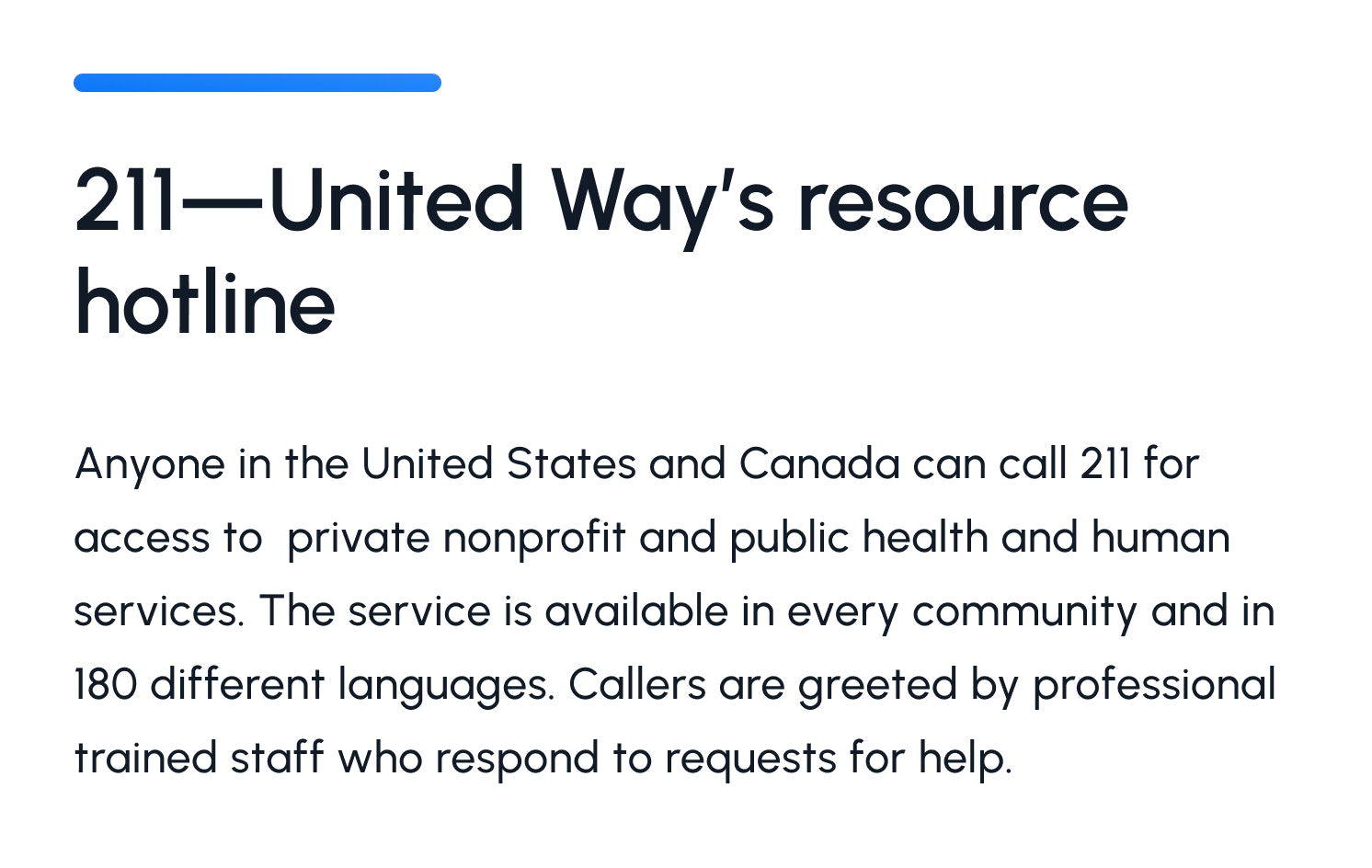United Way's guide to administering charitable funds
By Josh Pederson●5 min. read●Oct 7, 2024

As humans, it’s in our nature to want to help others. It’s what makes us unique.
Whether the need is local (a sick neighbor), regional (a natural disaster), or global in nature (climate change), people rally together to address challenges. Setting up a charitable fund is a natural evolution of that helping spirit.
Charitable funds put that innate altruism to work. They’re getting more common, too. Charitable foundations distributed nearly $91 billion in 2021, the second-highest amount in history. That amount has risen in 10 of the past 11 years. Charitable funds account for nearly 20% of all giving in the U.S.
So, how do you do it?
During my career, I’ve administered dozens of charitable funds for community based organizations like United Way and various state and local agencies. Here are my five keys to success.

Key to Success No. 1: It’s about the people
The most important key to success is respecting the dignity of those you serve. You can have an extremely well-run charitable fund that fails to meet your overarching goals — if you lose focus on the people receiving your help.
Establish the right tone and message from the outset that this is a partnership and that you’re solving the problem together. This isn’t a case of “handouts” or “hand ups” from one group to another but, rather, a collective community effort to address a problem that everyone agrees is important. This is what author Judy Salamon labels “Rambams Ladder,” in which the giver and receiver enter into mutual partnership to make things better.
Invite people your fund will serve to take part in discussions on things like:
who will qualify for help
how the fund will be promoted in the community
the vetting process for picking recipients (more on this later), and
how and when funds will be distributed.
Ask for feedback on your application process to ensure questions are relevant and appropriate.
As you design the program, be careful not to put undue burden on the people you serve. You don’t want to make it hard for them to receive the benefit you are offering. Inviting them into the planning process will help you avoid that.
Find local community leaders willing to share their perspective on your work and illuminate how you can best achieve your goals together with the people you intend to help.
Key to Success No. 2: Align infrastructure with existing programs
Setting up an entirely new charitable organization is hard work. It can also be unnecessary and duplicative, if existing organizations already serve the community or cause you’re targeting.
Before setting up a new charity, do a thorough scan of all the nonprofits and community organizations that interact with the population you plan to serve. More likely than not, you’ll find one that’s willing to partner to help solve the problem you’re focused on.
While serving on the board of our state nonprofit association, it was great to see like-minded leaders come together to deliver complementary services. I watched two performing arts organizations merge so they could improve ticketing and fundraising. I also saw mental health programs co-locate to remove barriers to people accessing services.
Key to Success No. 3: Financial transparency is essential
Now more than ever, people expect organizations to share details of funding in as transparent a manner as possible. It’s true for both people who might contribute to your fund as well as those potentially receiving it.
It’s not just the IRS that expects to see financial statements or audits on your organization’s website that provide an accurate picture of how funds are used. Your donors want access to that information, too.
People also want to know details on the challenges your organization addresses. For example, information like poverty rates, food needs, or other details you might glean from community assessments, the U.S. Census, or other sources can go a long way toward making funders comfortable.
Try to strike the right balance between emotion and logic. There’s an emotional reward to helping other people, but there’s also a need for pragmatism in showing how you are addressing the need.

This is important for the vetting process you set up, too.
It’s important that you have this written down, so that your funding committee follows a consistent process that feels neither arbitrary nor inflexible. Having things written down allows you to go back and make hard decisions later. You can change these guidelines in the future. The important thing is to document when, how, and why you changed it.
Key to Success No. 4 - Meet people where they are
You’ll need to promote your charitable fund among two groups: the people donating to the cause and the people eligible to receive help. Make sure to clearly define these audiences and do a thorough assessment on the best ways to reach them.
In short, meet people where they are. Your early efforts to engage with the communities you serve can go a long way to helping you figure this out.

Find out where people gather, what online forums they participate in, and who in the community already has their ear and attention. Depending on your focus, an organization like 211, which responds to 21 million calls a year from people who need help, can be a terrific partner.
Spread the word with other charitable organizations in your community and partner with them to help amplify your message.
Key to Success No. 5: Make it easy to collect
Distributing funds is one of the most important aspects to the job. You want to distribute help to as many people as possible in as short an amount of time as possible—while maintaining a thorough, vetted, and trustworthy process that has all the documentation and tracking that funders expect.
Ask the people you serve what kind of assistance they need. Find out the best ways to get it to them. In some instances, it could mean handing out or mailing physical gift cards. For others, sending prepaid debit cards with redeemable online codes could be the best option.
This is an area where technology helps immensely. When it comes to distribution, I look to Tremendous. It’s an effective and trustworthy way to get funding to people who need it most. Recipients can choose the payment method that works best for them, including an option for an immediate digital bank transfer.
By following these keys to success, you can transform natural altruism into activism and get help to the communities you serve.
About the author
Joshua B. Pedersen has worked and volunteered in the nonprofit industry since 1995. He serves as Chair for the Maryland Governor’s Commission on Service & Volunteerism and as a Trustee for the Ausherman Family Foundation. He’s a former board President of the Utah Nonprofits Association and Maryland Nonprofits Association. Learn more at Joshuabpedersen.com.
Updated October 7, 2024